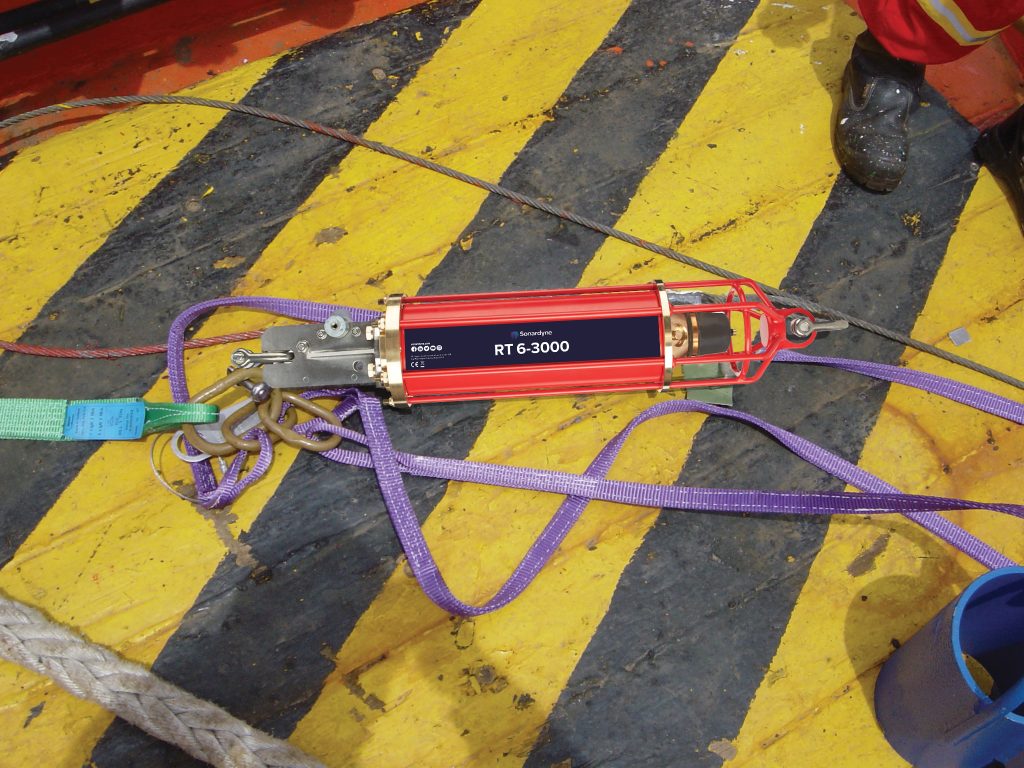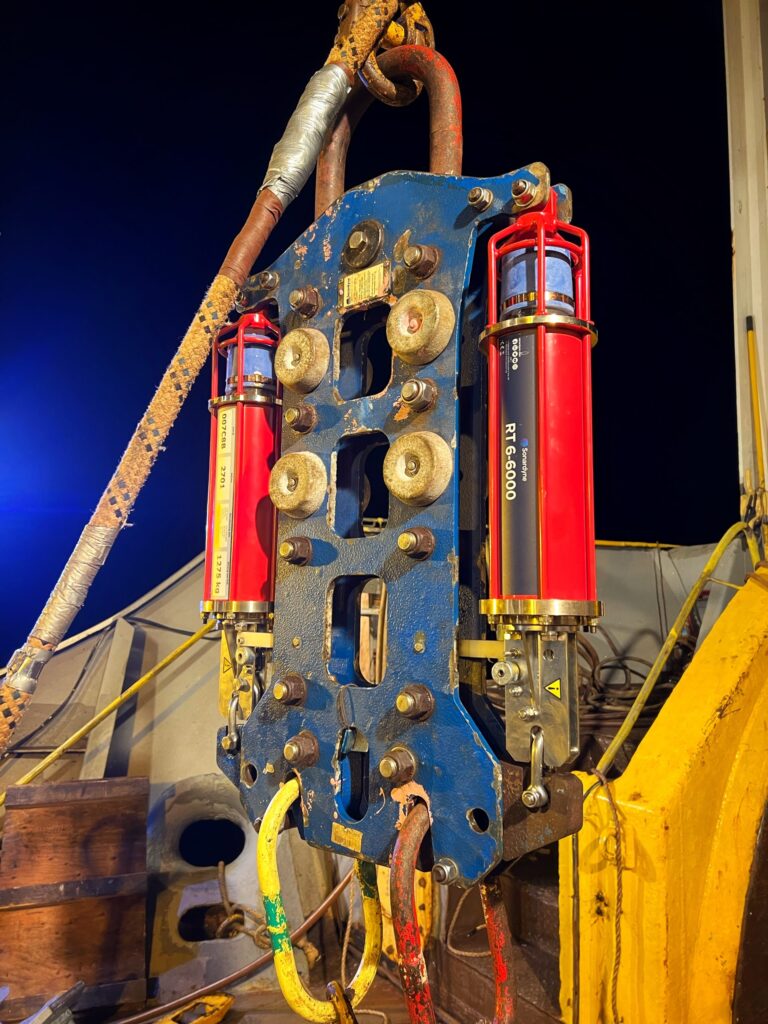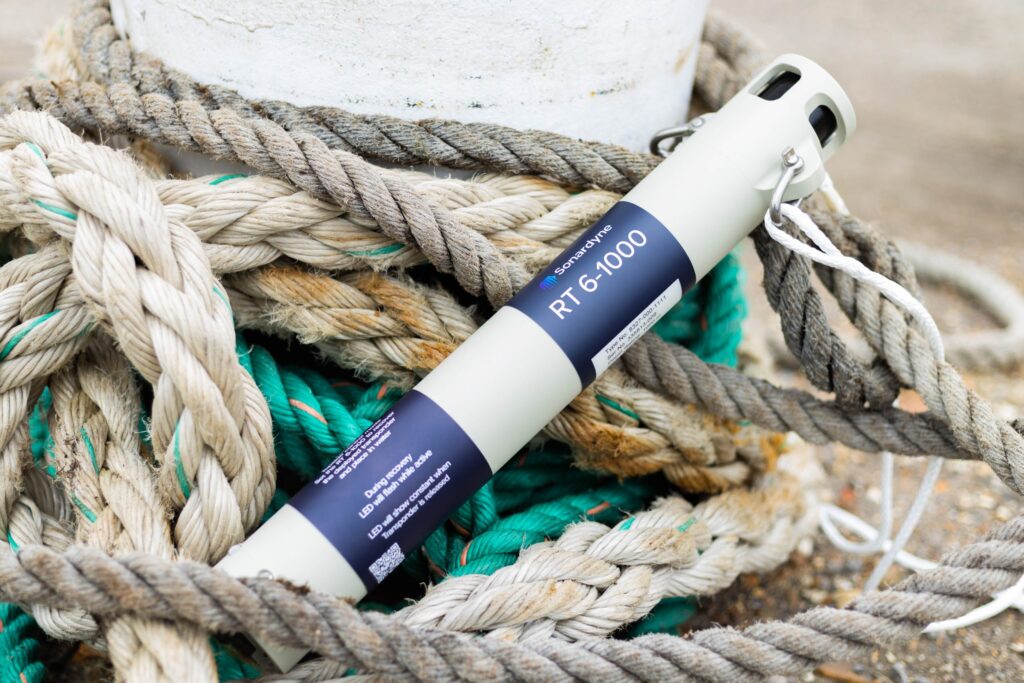An acoustic release is an oceanographic device for the deployment and subsequent recovery of instrumentation from the sea floor, in which recovery is triggered remotely by an acoustic command signal.
How does an Acoustic Release work?
An acoustic release consists of two components: a transducer and an electronic control unit. The transducer is a device which converts acoustic signals into electrical signals and vice versa and the electronic control unit is responsible for processing the acoustic signals and commanding the release mechanism.
There are three phases of operation when using an acoustic release: the deployment phase, the operation phase and the recovery phase. In the first phase (deployment), the instrument package is dropped to the sea floor. The package includes the anchor weight (allows the assembly to sink and remain on the sea floor), acoustic release device (receives remote commands), instrument or payload and a floatation device.
In the second phase, the instrument package is on the sea floor, collecting data or performing other tasks, this phase can last from minutes to several years. The final phase is the recovery phase, where an acoustic command is sent from a control station on a boat or an ROV; the acoustic release verifies the command, then triggers a mechanism that drops the anchor weight. The floatation device then brings the rest of the instrument package back to the surface for recovery.
An acoustic release has a variety of applications, including:
- To recover instrumented mooring lines
- Recovery of subsea structures
- Deployment of payloads onto the seabed such as for marine construction or cable laying
Acoustic releases are available for many different depth ratings. The RT 6-HD has the highest depth rating of 7,000m, designed to support applications from telecoms cable repair to structure installation with a working load limit (WLL) of 2,500kg. The mid depth rating option of acoustic release is the RT 6-3000 which has a depth rating of up to 6,000m designed for a wide range of sustained observation tasks which span years of in-situ measurements with a WLL of 1275kg. The RT 6-1000 has the shallowest depth rating of 1,000m which is a perfect, low-cost acoustic release for mooring environmental sensors with a WLL of 150kg.
- An acoustic release ready for deployment
- An acoustic release about to be deployed
- Shallow depth rated acoustic release
More specific information about our family of Acoustic Releases can be found here.
Contact [email protected] for more information.


